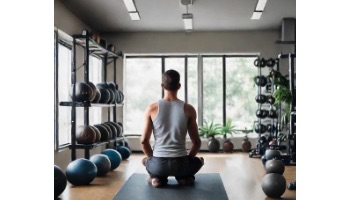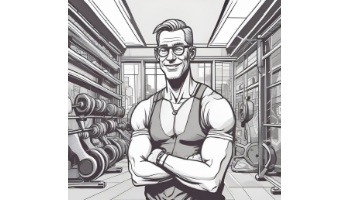The overhead squat is a challenging movement. It is both complex and physically demanding. For that reason, learning how to get there is no simple matter. If you do though, you’ll have the benefits of excellent mobility combined with quality strength and stability.
By far the best way to work towards a good overhead squad is with a qualified coach. There are so many factors and combinations of factors at play with this movement that, truly, there is no substitute for having someone with knowledge and experience to help direct you along the way. That being said, here are two guidelines about the overhead squat that can be both good for gauging where you are and that can help guide you when you practice.
 The Bottom Of Your Overhead Squat Should Be A Squat
The Bottom Of Your Overhead Squat Should Be A Squat
It may sound intuitive, but the first thing to know about an overhead squat is that the bottom position should look like your regular body weight squat. Many people, thinking that the bar should be directly overhead in an overhead squat (not illogical), attempt to keep their upper body more upright than their regular squat. That’s a mistake. Instead, at the bottom position the bar will be slightly behind your head rather than over it because, as with a normal squat, your upper body has to bend froward at a slight angle. Since the bar needs to stay over your center of gravity, that upper body angle means the head will have to be slightly in front of the bar.
The Bar Should Stay Over The Mid-foot
For many beginners, that forward pitch of the body feels like the bar falling behind them. They find it scary to allow the natural squat pattern to happen for fear of losing control of the load. A great way to overcome that feeling is to put your focus on where the bar is in relation to your feet, instead of your head. There should be a straight line between your mid-foot (which is just in front of the ankle) and the bar through each phase of the motion—top, middle, and bottom. If you can maintain that line while squatting naturally, you’ll know that the bar is right where it should be.

Great Mobility. Great Stability. Great Strength
To sum it up, A) you perform a normal squat and, B) you keep the bar over the mid-foot at all times. Make no mistake, this movement is difficult to master. You will have to have full mobility as well as stability and control in order to do it well. If you don’t, compensations will happen that will almost always lead to a less secure, less efficient overhead squat. That also means, though, that if you can do a successful overhead squat you will have the attributes that make for a very healthy body—good movement, good stability, and good strength. That’s a goal worth shooting for!


